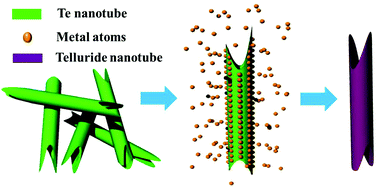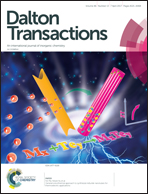General solvothermal approach to synthesize telluride nanotubes for thermoelectric applications†
Abstract
One-dimensional tellurides are good candidates for thermoelectric applications, but the fabrication of telluride nanotubes is still challenging. To this end, the solvothermal approach is proposed to synthesize Bi2Te3, PbTe, CuxTe and Ag2Te nanotubes. In this scheme, single-crystal Te nanotubes are produced first and then used as the sacrificed template for epitaxial growth of metal telluride. It was demonstrated that polycrystalline telluride nanotubes are produced. Considering Bi2Te3 nanotubes as an example, the pellets are prepared by spark plasma sintering, and the thermoelectric properties are measured. Compared to the nanowire counterpart, the higher-energy barrier to electrons at the grain boundaries (GBs) leads to an optimized power factor of 1.04 mW m−1 K−2 at 373 K in the nanotube samples. Furthermore, the thermal conductivity of nanotubes is in the range of 0.503–0.617 W m−1 K−1, which is much smaller than that of the nanowires. The ultralow thermal conductivity could be attributed to both the higher potential barrier of GBs and the additional scattering of phonons at the side walls of the nanotubes. In all, a ZT value of 0.74 was obtained at 373 K, which is much higher than that of nanowires. This synthesis route is ready to be extended to other telluride nanotubes.



 Please wait while we load your content...
Please wait while we load your content...